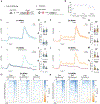D1 and D2 medium spiny neurons in the nucleus accumbens core have distinct and valence-independent roles in learning
- PMID: 38134921
- PMCID: PMC10939818
- DOI: 10.1016/j.neuron.2023.11.023
D1 and D2 medium spiny neurons in the nucleus accumbens core have distinct and valence-independent roles in learning
Abstract
At the core of value-based learning is the nucleus accumbens (NAc). D1- and D2-receptor-containing medium spiny neurons (MSNs) in the NAc core are hypothesized to have opposing valence-based roles in behavior. Using optical imaging and manipulation approaches in mice, we show that neither D1 nor D2 MSNs signal valence. D1 MSN responses were evoked by stimuli regardless of valence or contingency. D2 MSNs were evoked by both cues and outcomes, were dynamically changed with learning, and tracked valence-free prediction error at the population and individual neuron level. Finally, D2 MSN responses to cues were necessary for associative learning. Thus, D1 and D2 MSNs work in tandem, rather than in opposition, by signaling specific properties of stimuli to control learning.
Keywords: aversion; calcium imaging; fear conditioning; motivation; reinforcement learning; striatum.
Copyright © 2023 Elsevier Inc. All rights reserved.
Conflict of interest statement
Declaration of interests The authors declare no competing interests.
Figures







References
-
- Chang C-J, Guo W, Zhang J, Newman J, Sun S-H, and Wilson M (2021). Behavioral clusters revealed by end-to-end decoding from microendoscopic imaging. bioRxiv, 2021.04.15.440055. 10.1101/2021.04.15.440055. - DOI
MeSH terms
Substances
Grants and funding
LinkOut - more resources
Full Text Sources
Molecular Biology Databases
Research Materials
Miscellaneous

